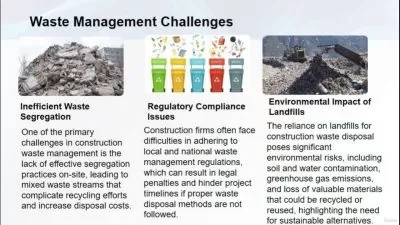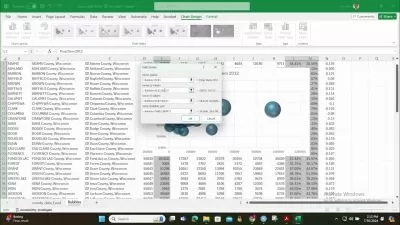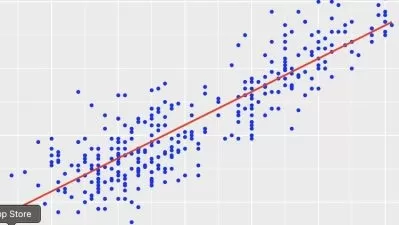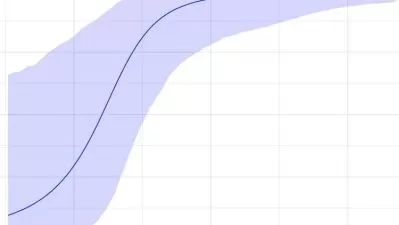Master Healthcare Analytics in R: BRFSS Data Science Pro
Focused View
4:13:11
01 - Welcome.mp4
00:46
01 - U.S. risk factors.mp4
05:30
02 - Introduction to the BRFSS.mp4
02:46
03 - More on the BRFSS.mp4
01:50
04 - What is a descriptive BRFSS analysis.mp4
04:57
05 - Cross-sectional analysis in the BRFSS.mp4
03:52
06 - Ethical use of BRFSS data.mp4
04:38
07 - BRFSS resources.mp4
02:25
08 - Choosing R for a BRFSS analysis Some considerations.mp4
03:51
09 - Choosing R for a BRFSS analysis More considerations.mp4
04:14
10 - Installing R.mp4
01:50
11 - Navigating in R.mp4
02:37
12 - Installing the foreign package.mp4
03:08
13 - Installing necessary packages.mp4
03:58
01 - Uses of a data dictionary.mp4
04:35
02 - How to set up a data dictionary.mp4
03:48
03 - Adding to the data dictionary.mp4
06:13
04 - Understanding confounders.mp4
04:24
05 - Making a web of causation.mp4
06:28
06 - Designing confounders Age and smoking.mp4
04:42
07 - Designing confounders Other demographics.mp4
04:19
08 - Designing confounders Other variables used in analysis.mp4
04:39
01 - Reading in BRFSS XPT data.mp4
06:57
02 - Naming conventions.mp4
05:38
03 - Keeping native variables.mp4
05:15
04 - Applying the first exclusion.mp4
06:03
05 - Applying the rest of the exclusions.mp4
04:57
06 - Operations in code.mp4
03:52
07 - Making a data reduction diagram.mp4
04:35
08 - Generating exposure.mp4
04:43
09 - Generating outcome variables.mp4
03:32
01 - Generating the age variables.mp4
04:18
02 - Generating the smoking variables.mp4
04:36
03 - Finalizing the analytic data set.mp4
05:46
04 - What is Table 1.mp4
04:26
05 - Reviewing categorical variable distribution.mp4
06:15
06 - Reviewing continuous variable distribution.mp4
06:29
01 - Preparing categorical Table 1 shell.mp4
06:10
02 - Preparing continuous Table 1 shell.mp4
02:46
03 - Adding overall frequencies to categorical Table 1.mp4
04:59
04 - Making a frequency macro.mp4
04:08
05 - Adding overall frequencies to continuous Table 1.mp4
03:04
06 - Completing categorical Table 1.mp4
07:07
07 - Completing continuous Table 1.mp4
05:47
01 - Three truths about using weights.mp4
04:58
02 - Conducting a descriptive weighted analysis.mp4
07:50
03 - Why conduct bivariate tests.mp4
05:08
04 - Adding categorical bivariate tests to Table 1.mp4
07:17
05 - Introduction to ANOVA and linear regression code.mp4
02:43
06 - Adding continuous bivariate tests to Table 1.mp4
07:25
01 - Review of the metadata.mp4
06:11
02 - Uses of metadata.mp4
05:26
03 - Review of the process.mp4
03:39
04 - Next steps in the BRFSS analysis.mp4
05:41
More details
Course Overview
Learn to analyze behavioral health data using R with this comprehensive guide to the BRFSS dataset. Master epidemiological analysis techniques, data visualization, and scientific documentation for public health research.
What You'll Learn
- Perform cross-sectional analysis on BRFSS data using R
- Create data dictionaries and handle metadata effectively
- Generate and interpret Table 1 for scientific publications
Who This Is For
- Public health professionals analyzing population data
- Data scientists working with healthcare datasets
- Medical researchers conducting epidemiological studies
Key Benefits
- Hands-on experience with real-world BRFSS data
- Learn to document analysis for scientific publication
- Master weighted analysis and bivariate testing
Curriculum Highlights
- BRFSS fundamentals and ethical considerations
- Metadata design and confounder analysis
- Data preparation and descriptive analytics
Focused display
Category
- language english
- Training sessions 54
- duration 4:13:11
- Release Date 2025/04/19









